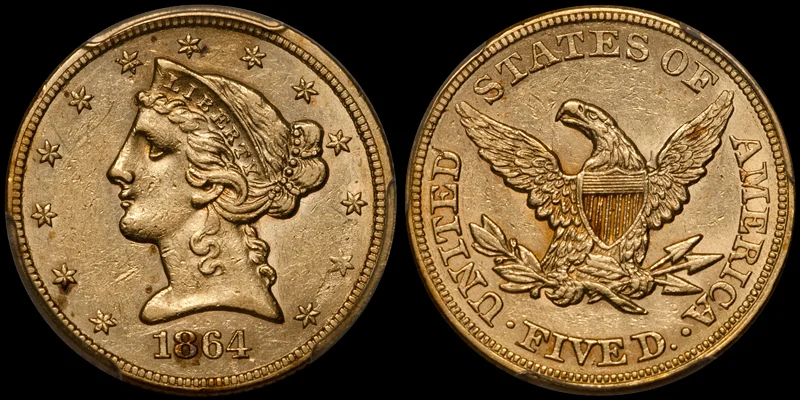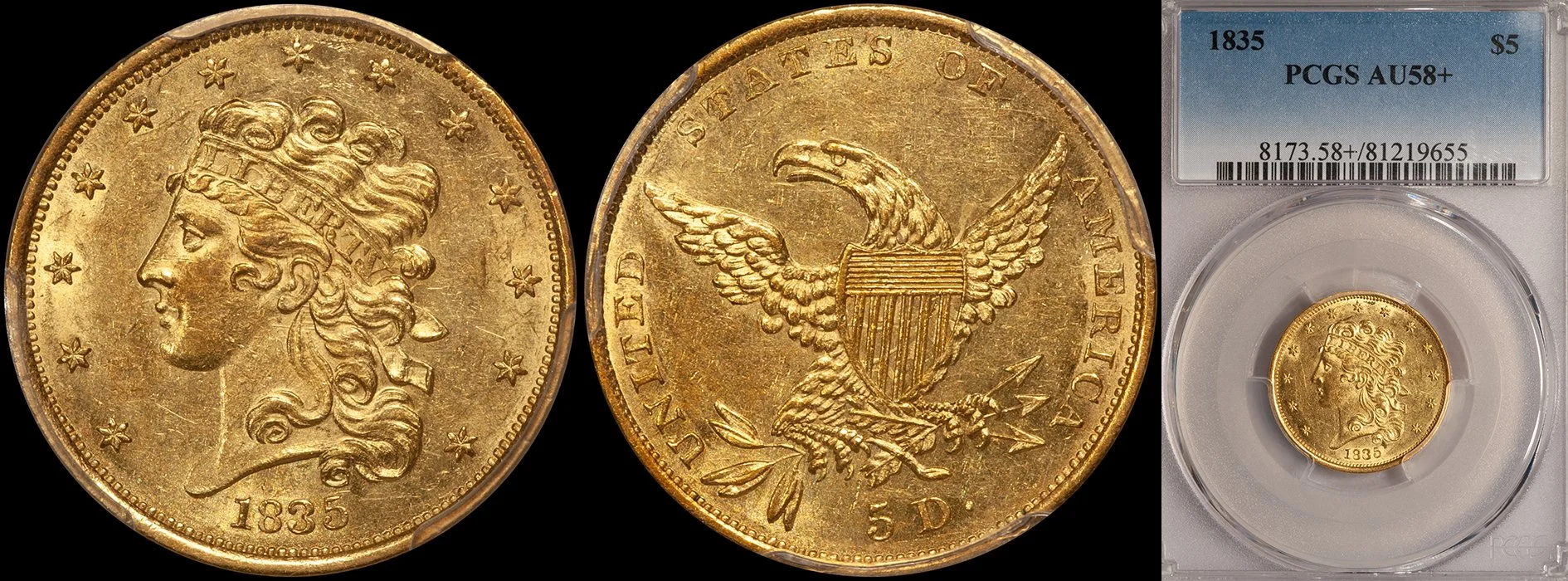Why are so Many 19th Century-Dated Gold Issues so Rare with Original Color and Choice Surfaces?
/Many collectors of 19th century rare date gold (finally) appreciate coins with natural color and choice surfaces. I’m not sure that there is an actual consensus amongst these collectors about what “natural” color actually is but I, for one, am glad to see dirty gold more appreciated than its bright, shiny counterparts.
As collectors become more insistent on originality, they are quickly discovering that many 19th century issues are extremely hard to locate with a nice, natural appearance. Why is this?
I believe that the answer(s) to this question is actually more complex than generally assumed, and it encompasses a century old timeline.
The first reason—and maybe the most obvious—has to do with low original mintage figures and even lower survival rates. Many No Motto issues (and the equivalent era for gold dollars, quarter eagles, and three dollars) have low mintage figures. In the case of the branch mint issues, these figures were often under 10,000 coins and nearly always below 25,000-50,000. Given that the typical survival rate falls within the 0.5 to 2.5% range, this means that were are invariably talking about coins which number between 50 and 250 known.
The second reason has to do with heavy circulation patterns, especially for No Motto New Orleans and San Francisco issues, and all pre-1885 Carson City issues. The quarter eagles, half eagles and, to some extent, eagles from these mints/this era saw active use in circulation. As an example, look at the San Francisco half eagles and eagles dated 1858 through 1876. With very few exceptions, these dates are all rare from an absolute standpoint (the total number known) and nearly all are very rare from a condition rarity standpoint. If a coin has seen enough time in circulation to grade Very Good to Very Fine, the chances of it having been mishandled at one time are likely close to 90-95%.
But the reasons which we can concern ourselves with most are more numismatic in origin.
Rare date gold became a big business in the 1980’s and 1990’s and large marketing companies began to sell it due to the great story and the seemingly excellent value it represented. A number of related factors became evident and, in the process, these nearly destroyed the dated gold market.
The rise of third-party grading ca. 1986-1987 had a tremendous impact on all facets of the rare coin market; many good, some not-so-good. The graders who were hired were nearly all world-class but most of them had a background in big, shiny coins such as Walking Liberty half dollars, Morgan and Peace dollars, and St. Gaudens double eagles. With few exceptions, many of these graders had literally never handled a Charlotte quarter eagle or a No Motto New Orleans eagle, and they had to learn how to grade these coins on the fly.
As a rule, when you don’t know how to grade a series, you undergrade it when you are forced to make decisions. This is why dated gold graded by PCGS and NGC between 1987 and around 1993/1994 tended to be brutally undergraded, especially when it was dirty and original. I can remember sending beautiful, pristine C+D mint gold to PCGS around 1988/1989 and being baffled by the grades. Coins I thought were solid EF’s were routinely graded VF and coins I thought were solid AU’s were returned in EF holders.
There was an unfortunate solution to this problem: if you made the dark, dirty coins bright and shiny, you got the grades you wanted. Some submitters reacted by dipping the coins. Others over-reacted by scrubbing the dark, dirty coins with baking soda (or worse).
Unfortunately, the scrubbed coins worked enough at both services that there was little motivation to keep them dark and dirty. And this was compounded by the fact that the biggest end users—the large marketing firms—preferred their gold to be bright and shiny as it was easier to sell.
During the 1980’s and the 1990’s, there were at least three major submitters of rare date gold coins who scrubbed or processed virtually every coin they handled. One of these individuals alone ruined tens of thousands of coins and as far as I can tell, much of his handiwork is still lodged in third-party graded holders.
While it’s easy to blame these dealers and the grading services there were at least two other factors at play.
The first was the pricing mechanisms of the day. Back then, pricing was mainly controlled by two publications (CDN and Coin World Trends) and the numbers they reported had seemingly little or no basis in the reality of the market. They might show the value of an EF45 rare date D Mint half eagle at $5,000 but this price assumed all EF45 examples were the same; a fact we know today to not be true. Also, auction prices were mostly hidden and unless you knew a dealer who kept a database of prices (like I did; a process that was exceedingly labor-intensive) you relied mostly on the “suggested” prices reported by the leading publications of the day. Bottom line: if all EF45’s of a certain date were worth X, why bother to keep your coin dirty and original if there was no extra value?
The second was more subtle. The price differences between grades were huge back then. As an example, an EF45 might have a Trends price of $3,000 while an AU55 might have a Trends price of $10,000. For many dealers, the temptation was great to take a nice EF45 which was worth $3,000 (no one was going to stretch to $4,500-5,000 back then for a PQ coin) and make it an $8,000 coin by ruining it and getting it into a 55 holder. Sounds silly and perverse in 2016, but thousands and thousands of choice dated gold coins were ruined for this very reason.
Today, the advent of CAC and the widespread appeal of the internet and its emphasis on coin images have helped to staunch the bleeding from two decades of destruction. But the numbers tell the story.
1864 $5.00 PCGS AU55
Let’s take a coin like an 1864 half eagle. Only 4,170 were struck and assuming a 1% survival rate, around 40 were in existence by the end of the 1970’s. Due to heavy circulation and prior mishandling, maybe 15 of these coins were what I would consider “choice for the grade” by the advent of slabbing.
During the dark days of rampant coin doctoring, at least half of these 15 coins were likely permanently ruined. These leaves us with around seven or eight 1864 half eagles—in a wide range of grades—which are choice for the grade and which have enough semblance of originality that they would likely sticker at CAC if submitted. As of June 2016, CAC has approved eight but three grade AU55 and three grade AU58 which suggests inflation by resubmission. Taking this into consideration, the number which have CAC’d and which should have survived with a CAC-worthy appearance are about equal.
The endangered species metaphor is apt as we close this blog. Think of the iconic wild animals which once existed in such huge quantity that they were taken for granted. Today, everyone “loves” tigers, elephants, rhinos, etc. but in many cases their numbers are in an irreversible decline. Dated gold coins seem trite compared to African predators but if you love dark, dirty coins, you feel the same tinge of sadness when you see yet another 1864 half eagle which has been stripped of its character and is now little more than a circular yellow disc.
















